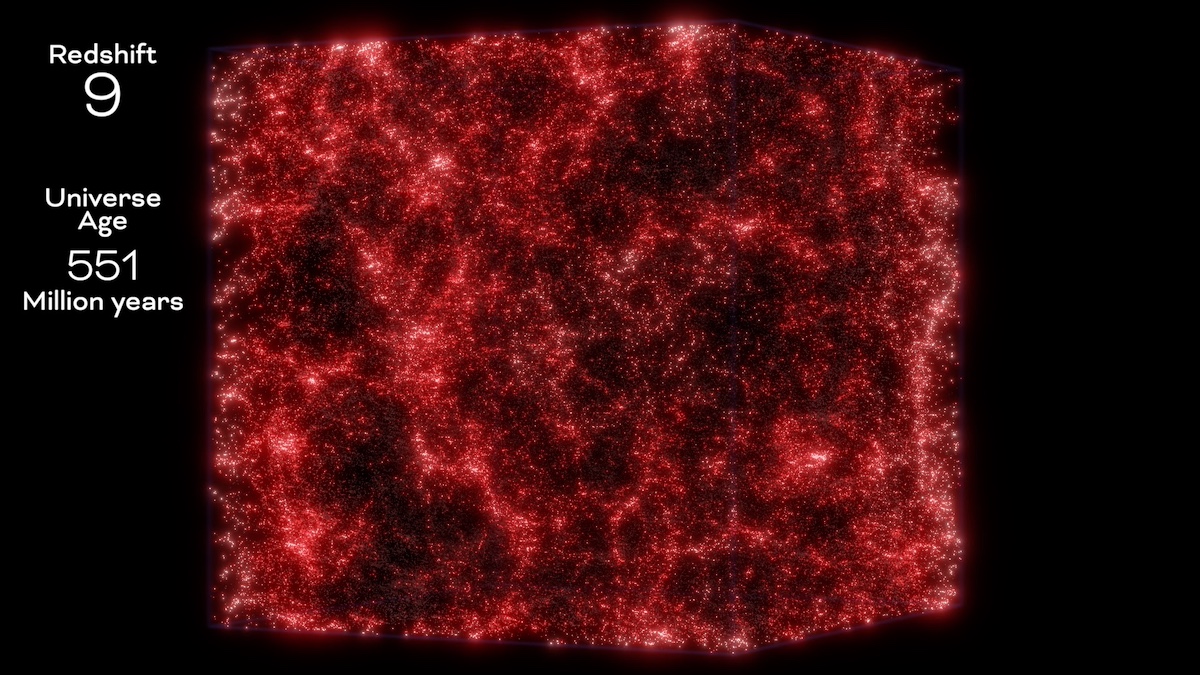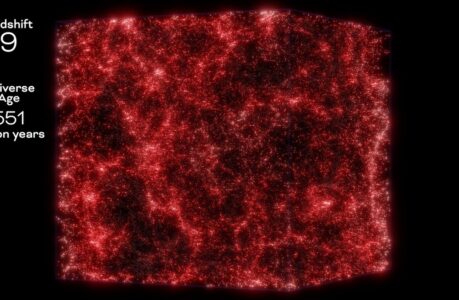Unlocking the Secrets of the Universe: Delve into the Enigmatic Realm of Galaxy Redshifts and Their Profound Significance
The universe has always captivated our imagination with its vastness and enigmatic beauty. Among the many intriguing phenomena that adorn the cosmos, the concept of galaxy redshifts stands as a prominent cosmic puzzle. In this journey through the cosmos, we will embark on an exploration of what redshifts are, how they are measured, and what they reveal about the universe’s grand tapestry. From the pioneering work of astronomers to the far-reaching implications for our understanding of the cosmos, this article is your key to unraveling the secrets hidden within the redshift of galaxies.
Understanding Redshift: A Cosmic Velocity Indicator
The Doppler Effect: A Celestial Symphony in Motion
To embark on our cosmic voyage, we must first grasp the fundamental concept of redshift. Imagine a passing ambulance, its siren wailing as it approaches and then fading into the distance. This change in pitch, known as the Doppler Effect, occurs because sound waves compress as the ambulance nears and stretch as it moves away. A similar phenomenon happens with light and cosmic objects, albeit on a vastly grander scale.
When a celestial object moves away from an observer, its emitted light undergoes a shift towards the red end of the electromagnetic spectrum. This shift, known as the redshift, is a direct consequence of the Doppler Effect applied to light. Conversely, when an object moves closer, its light shifts towards the blue end, known as blueshift. By analyzing these spectral shifts, astronomers can uncover valuable information about the motion of distant galaxies and the expansion of the universe.
Measuring Redshift: The Cosmic Color Shift
Measuring the redshift of galaxies is a meticulous and precise task that forms the backbone of modern cosmology. Astronomers employ various techniques to determine this crucial parameter. One such method involves spectroscopy, where the light from a galaxy is dispersed into its constituent colors, revealing distinctive spectral lines.
These lines act as cosmic fingerprints, and their displacement towards longer wavelengths indicates redshift. Astronomers often use a unit called “z” to quantify the degree of redshift. A redshift of z = 0 means no shift, indicating a nearby object with negligible motion, while larger values of z signify greater distances and faster recessional velocities.
Hubble’s Law: The Expanding Universe Revelation
The concept of redshift, coupled with the groundbreaking observations of Edwin Hubble, ushered in a revolution in our understanding of the cosmos. Hubble’s Law, formulated in the 1920s, established a direct link between the redshift of galaxies and their distance from Earth.
Hubble observed that galaxies farther from us exhibited greater redshifts, indicating that the universe itself is expanding. This revelation shattered the long-held belief in a static universe and gave birth to the Big Bang theory, which postulates that the universe originated from a hot, dense state and has been expanding ever since.
Cosmic Microwave Background: Echoes of the Big Bang
As we delve deeper into the implications of redshifts, it’s essential to mention the cosmic microwave background (CMB). The CMB is a faint radiation permeating the universe, discovered by astronomers Arno Penzias and Robert Wilson in 1965. This radiation is a relic of the universe’s early moments, mere hundreds of thousands of years after the Big Bang.
The CMB exhibits a remarkably uniform temperature of approximately 2.7 Kelvin (-454.8°F). However, tiny fluctuations in temperature across the sky hold vital clues about the universe’s early history. These fluctuations were imprinted on the CMB when the universe was just a hot, dense soup of particles. The redshift of the CMB, known as the cosmic redshift, is a critical piece of evidence supporting the Big Bang theory and our understanding of the universe’s evolution.
Beyond the Redshift: Cosmic Insights Unveiled
Cosmic Scale and Distance Measurement
The redshift of galaxies is not merely an indicator of cosmic motion but also a crucial tool for measuring cosmic distances. By knowing the redshift of a galaxy and applying Hubble’s Law, astronomers can estimate its distance from Earth. This methodology has enabled us to create a detailed cosmic map, illustrating the distribution of galaxies across the universe.
Galaxy Formation and Evolution
Galaxy redshifts offer a window into the past, allowing us to trace the evolution of galaxies throughout cosmic history. As we observe galaxies with varying redshifts, we effectively peer back in time. Galaxies with lower redshifts are relatively closer to our present epoch, while those with higher redshifts existed when the universe was much younger.
This temporal insight has revealed a captivating narrative of galaxy formation and evolution. Through the study of distant, highly redshifted galaxies, astronomers have observed galaxies in their infancy, mere billions of years after the Big Bang, providing valuable insights into the early stages of cosmic structure formation.
Dark Energy and Cosmic Acceleration
Intriguingly, redshift measurements have unveiled a profound mystery: the universe’s accelerating expansion. In the late 1990s, observations of distant supernovae with high redshifts indicated that the expansion of the universe is not slowing down, as previously thought, but accelerating. This revelation led to the proposal of an enigmatic and repulsive force known as dark energy.
Dark energy, a mysterious and invisible component of the cosmos, is thought to counteract gravity on cosmological scales. Its presence, inferred from redshift data, suggests that the fate of the universe may be an ever-expanding, exponentially accelerating one.
Applications of Redshift: Unraveling Cosmic Mysteries
Cosmic Microwave Background (CMB) Studies
The redshift of the cosmic microwave background has been a treasure trove of information for cosmologists. Detailed measurements of the CMB’s temperature fluctuations have allowed scientists to investigate the early universe’s conditions, such as its density, composition, and the existence of dark matter.
By analyzing the redshifted CMB, researchers have gained insights into the universe’s expansion rate at different epochs, confirming the existence of dark energy and providing further support for the Big Bang theory.
Probing Dark Matter Distribution
Dark matter, another cosmic enigma, exerts a gravitational pull on visible matter, affecting the motion of galaxies. By studying the redshifts of galaxies within galaxy clusters, astronomers can indirectly map the distribution of dark matter.
The phenomenon of gravitational lensing, where the gravitational field of dark matter bends and distorts light from background galaxies, provides additional clues about dark matter’s presence and distribution.
Cosmic Surveys and Large-Scale Structure
The comprehensive mapping of galaxy redshifts has led to ambitious cosmic surveys, such as the Sloan Digital Sky Survey (SDSS) and the Dark Energy Survey (DES). These endeavors aim to chart the positions and redshifts of millions of galaxies across vast cosmic volumes.
Through these surveys, scientists aim to unravel the large-scale structure of the universe, discerning patterns and clusters of galaxies that provide critical insights into cosmic evolution and the distribution of matter on a grand scale.
Challenges and Future Frontiers
Precision Redshift Measurements
While galaxy redshifts have provided invaluable insights into the cosmos, the field continues to face challenges. Achieving ever-greater precision in redshift measurements is an ongoing pursuit, as subtle variations in redshift can reveal details about the motion of galaxies within clusters and the influence of local environments.
Probing the Dark Sector
The existence of dark matter and dark energy remains two of the most significant mysteries in astrophysics. Redshift studies, along with complementary approaches, such as direct detection experiments and high-energy particle physics, continue to be instrumental in our quest to understand these elusive cosmic constituents.
Cosmic Evolution and Exoplanets
As technology advances, astronomers are pushing the boundaries of our understanding. Future missions and telescopes promise to unveil the cosmic story in even greater detail. These missions will focus on studying the earliest galaxies, the cosmic microwave background, and the potential for habitable exoplanets in distant star systems.
Conclusion
In the vast tapestry of the universe, the redshift of galaxies stands as a powerful tool for astronomers. It not only reveals the motion and distances of cosmic objects but also unravels the profound mysteries of the cosmos. From the awe-inspiring expansion of the universe to the enigmatic dark energy, redshift measurements have led to groundbreaking discoveries that continue to shape our understanding of the cosmos.
As we peer through the lens of redshift, we find ourselves on a perpetual cosmic journey, each discovery unveiling new questions and inspiring future generations to explore the depths of the universe. The universe’s story, written in the subtle shifts of light, continues to beckon us, promising an ever-deeper understanding of our place in the cosmos.
Explore More Cosmic Wonders:

